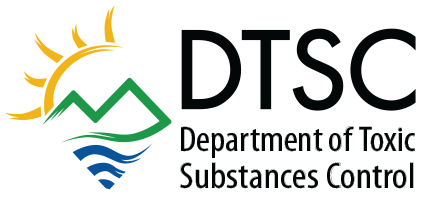Biennial Report Information
The 2023 Biennial Report Cycle opens on January 2, 2024.
DTSC has opted into the federal RCRAInfo Biennial Report system for the 2023 cycle.
If you haven’t done so already, please register an account on RCRAInfo. For instructions on how to register, please watch the brief MyRCRAid training video.
Training Resources and Frequently Asked Questions
Frequently Asked Questions About the Biennial Report:
Purpose of the Biennial Report
DTSC and U.S. EPA have a common mission to protect human health and the environment, which they carry out by enforcing strict management standards for hazardous wastes, and gathering information about the generation, management, treatment, storage, transportation and the final disposition of hazardous waste in the state.
The federal and state hazardous waste regulations require certain federally-regulated (RCRA) hazardous waste generators, as well as, facilities that treat, store, or dispose of RCRA hazardous waste, to report their hazardous waste activities biennially in odd-numbered calendar years. The information collected will:
- Provide the U.S. EPA and California with a view of current hazardous waste generation and waste management in the United States;
- Show trends and changes in waste management and quantity when compared to past years’ reports;
- Be summarized and provided to the public, primarily through publication of the National Biennial RCRA Hazardous Waste Report.
You are required to file a 2023 Biennial Report if you meet one of the following conditions:
- You are a RCRA Large Quantity Generator (LQG). This means your site:
-
- Generated 1,000 kilograms (kg; 2,200 pounds [lbs.]) or more of non-acute RCRA hazardous waste (including quantities imported by importer site) in a single month; or
- Generated in a single month or accumulated at any time, 1 kilogram per month (kg/mo; 2.2 pounds per month [lbs/mo]) or more of any RCRA acute hazardous wastes listed in 40 CFR sections 261.31 or 261.33 or
- Generated or accumulated at any time, more than 100 kg (220 lbs.) of any residue or contaminated soil, waste, or other debris resulting from the cleanup of a spill, into or on any land or water, of any RCRA acute hazardous waste listed in 40 CFR sections 261.31 or 261.33(e) or
- Your facility treated, stored, or disposed of RCRA hazardous waste on site in units subject to RCRA permitting requirements during the reporting year.
Examples:
If you did one of the following, then you must complete the 2023 Biennial Report:
- Became an LQG for one calendar month, even though you are a Small Quantity Generator (SQG), and generated excess amounts of RCRA or acute RCRA hazardous waste.
- Generated residue-contaminated soil containing acute RCRA hazardous wastes that made you become an LQG for one calendar month (even if you are an Small Quantity Generator [SQG] or a Very Small Quantity Generator [VSQG]).
If you changed your generator status:
- You’ll report your current hazardous waste generator status on the Site ID Form in Item 10.A.1 – Generator of Hazardous Waste – as of the date of submitting your 2023 Biennial Report. Your current status may be different from last year.
If you imported hazardous waste (If you are a hazardous waste importer):
- All Hazardous Waste imported from a foreign country in 2023 must be counted in determining your generator status.
- This waste must be reported on the Waste Generation and Management Form (GM Form) or the Waste Received from Off-site Form (WR Form) in your 2023 Biennial Report.
Exemptions
If, after reading the section on DEFINITION OF A RCRA LARGE QUANTITY GENERATOR, you still feel your site may be exempt from filing the Biennial Report, please read the 2023 Biennial Hazardous Waste Report Exemption Request Instructions to file an exemption request electronically. Note: This is a request only.
Past Biennial Report Cycles
2021 & 2019 Biennial Report
THE 2021 & 2019 BIENNIAL REPORT CYCLES HAVE CLOSED.
California required electronic filing of your 2021 & 2019 Biennial Reports using RCRAinfo. If you have any questions or would like a .pdf version of your Biennial Report mailed to you, please contact us at BRSStaff@dtsc.ca.gov.
2017 Biennial Report
THE 2017 BIENNIAL REPORT CYCLE HAS CLOSED.
California required electronic filing of your 2017 Biennial Report using the DTSC Waste Reporting System (WRS). If you have any questions or would like a .pdf version of your Biennial Report mailed to you, please contact us at BRSStaff@dtsc.ca.gov.
2015 Biennial Report
THE 2015 BIENNIAL REPORT CYCLE HAS CLOSED.
DTSC used the EasiTrak reporting software, which is no longer available. If you have any questions or require a copy of your 2015 Biennial Report filing, please contact us at BRSStaff@dtsc.ca.gov.
Annual/Biennial Report Links
Hazardous Waste Links
- Hazardous Waste Home
- Certified Appliance Recycler (CAR) Program
- CUPAs
- Defining Hazardous Waste
- Electronic Waste (E-Waste)
- Emergency Response Program
- Enforcement
- Facilities (TSDFs)
- Generator Improvements Rule
- Generators
- Hazardous Waste ID Numbers
- Hazardous Waste Management Plan
- Hazardous Waste Manifests
- Hazardous Waste Tracking System
- Household Hazardous Waste
- Metal Recycling
- Metal Shredding Facilities and Wastes
- Permitting
- Toxics in Products
- Transporters
- Universal Waste
- Form 1358
- California Hazardous Waste Codes
Hazardous Waste Related Links
- Annual/Biennial Reports
- Annual Fee Summary
- Customer Billing Portal (Cost Recovery)
- DTSC Advisory on the Management of Spent Fuels
- EnviroStor
- Hazardous Waste Publications
- Find a Registered Hazardous Waste Transporter
- Hazardous Waste Policies & Procedures
- Hazardous Waste Project Documents
- Imports and Exports of Hazardous Waste
- Kettleman Hills Facility
- Land Use Restriction Sites
- Office of Criminal Investigations
- PV Modules (Solar Panels)
- Regulatory Assistance Office
- Report an Environmental Concern
- Retail Waste

